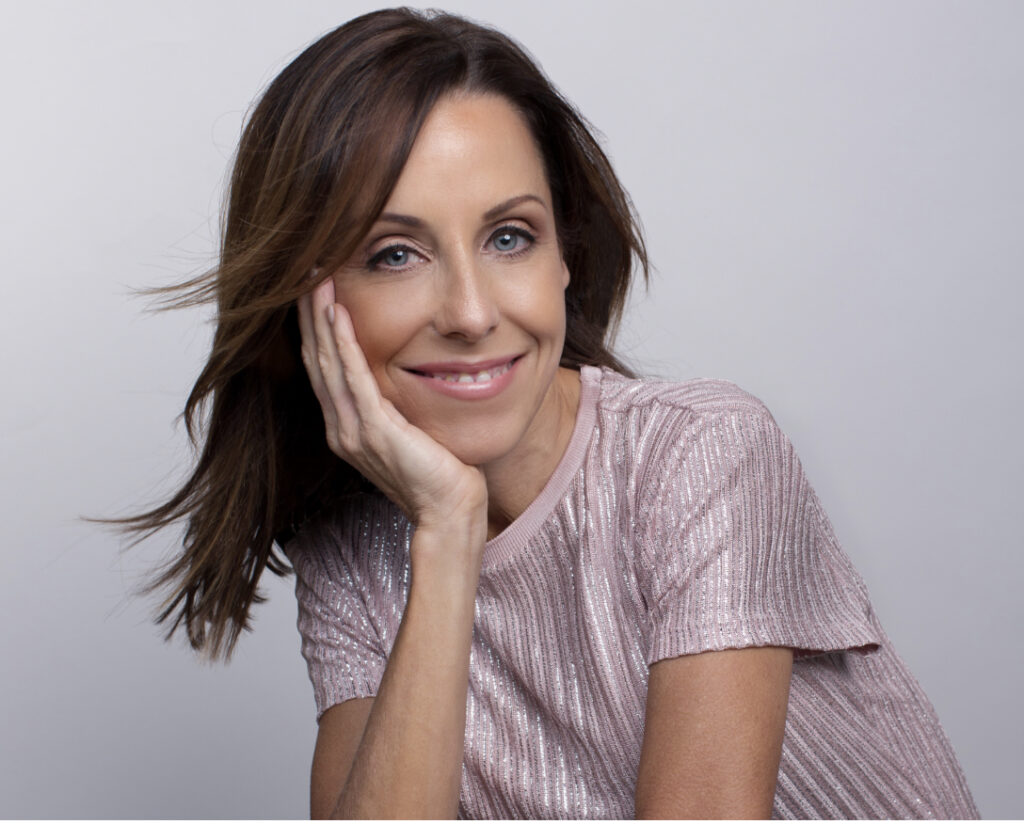Parenting with an eating disorder

Parenting with an eating disorder
I am a mom with an eating disorder.
Those were once difficult words for me to say out loud.
There is a myth that anorexia nervosa (AN) is only an adolescent disorder. The truth is, 13 per cent of American women 50 or older experience eating disorder symptoms. I am one of them.
My secret life
I developed AN in my 20s and also suffer from obsessive compulsive disorder (OCD). Until my three boys were born 12 years ago, I considered myself reasonably “successful” at living with my disordered eating patterns, extreme exercise and social isolation without disrupting too many people in my life. In truth, I wasn’t hiding it as well as I thought, but in my mind, this secret world I lived in wasn’t hurting others.
Pregnancy — A new joy confronts an old enemy
Before I became pregnant with my triplets in 2010 at age 38, I had miscarried three times. So, when I first received the news, I was on cloud nine. For about 24 hours, this new joy erased my eating demons and treadmill compulsion.
But that didn’t last. I was under-weight and anemic, and the battle between my eating disorder and my maternal instinct began.
Because of the high-risk nature of my pregnancy (triplets), I was assigned a perinatologist. During my early visits, she would state that if I didn’t gain a certain amount of weight before my next visit, I would be admitted to the hospital where a care team would create a plan to make that happen.
I eventually lost that battle and landed in the hospital. The needs of my three little miracles were losing the tug-of-war with the voice in my head. A feeding tube was inserted to sustain all four of our lives.
My two worlds collide
At 32 weeks, Max, Sam, and Luke were born. They were beautiful and healthy — my answered prayers.
All throughout my pregnancy, nurses, doctors, family, and friends said that as soon as I laid eyes on my sweet babies, my previous life — that was plagued by anorexic and OCD demons — would cease to exist. I would no longer think of my “safe” foods, the next mile I needed to run, or counting calories. The words of the health professionals, family, and friends, felt condescending and caused me to feel immense guilt when the tormenting thoughts did not abate. Those I trusted to care for me were implying that my “little eating issue” and “excessive running thing” could be easily remedied. They were wrong.
My boys stole my heart and I felt immeasurable love for them, but the voice racing through my mind that fueled my eating disorder remained. However, I was determined that these two worlds would never collide. The juggling act just became a lot trickie
The tightening grip of my eating disorder
I didn’t second guess my anorexia. I really felt I had no choice. I didn’t know how to live without it. And in some ways, being a new mother, especially to triplets, I found I could more easily engage in the disorder without questions from family and friends.
Having three newborns at home is time-consuming to say the least, and everything had to be on a schedule — something on which I thrive. However, I also kept my eating routines and runs on that schedule. I kept this schedule solely in my head for fear of leaving a paper trail and being found out. In my mind, if no one could see the evidence of my daily life, no one could use it against me. I also felt the need to be in control and to be the boys’ primary caregiver. This meant I was involved in every aspect of their daily needs, leaving little time to sit and eat.
Everyone was telling me I couldn’t do this all on my own and needed to accept help. However, I wanted to mother on my own, so their words felt like criticism and served only to create stress. Of course, my coping mechanism for stress had always been under-eating and overexercising. I did not know how to live without those behaviors, so I became even better at hiding them.
To get in my seven to eight hours of daily exercise, I had to start VERY early. Putting in the hours before my family woke up was the only way to check “exercise” off my list of must do’s.
In addition, I never ate at normal times. I rarely ate, period — only late at night when my checklist was complete, and I had “alone” time to gather my “safe” foods and reward myself for another day of torture. I found that missing meals during the day was not difficult to hide when multiple babies were requiring a lot of attention. The focus of “what Diane is, or is not, eating” seemed to escape everyone’s minds amid the constant cries and chaos of caring for three little ones.
Despite efforts to hide my disorder from those I loved, AN took a toll on my body. Due to my excessive running, I regularly suffered from broken bones in my feet. I also became severely anemic, leading to several iron infusions and even blood transfusions. However, I never complained because I did not want my tendencies to be taken from me. How did I mother triplets while managing lightheadedness and broken bones? I’m honestly not sure. It became such a way of life for me that feeling “normal” would have seemed foreign.
Inspiration, determination, and baby steps to break free
Despite the tightening grip my eating disorder held on me, my boys remained my whole world and they have inspired me to live a better a life. They are now 12, and while my battle against AN continues, I am making strides toward a life freer from it.
STEP ONE: Accepting there is only one way off my treadmill and that is by taking one small step at a time. This first step requires honesty and transparency — I am a mom with an eating disorder.
STEP TWO: Testing myself by tweaking the rules my eating disorder has forced me to follow, creating new, healthier patterns in my life:
- Gradually taking minutes off my daily exercise time — sometimes in increments as small as 15 minutes
- Shortening my workouts by telling the voice in my head that the rest of my workout will come after other things, like taking care of the boys and attending their school events
- Slowly adding new foods to my limited diet
- Changing the order in which I eat foods
- Taking a break from running and trying a cycling studio
I trick my eating disorder and reclaim a sense of ownership. At first this was very hard, but the more I do it, the more I realize the result is not only freeing, but enjoyable.
Baby steps.
Do I have setbacks? Yes. Do I punish myself because of them? No.
What are some of the setbacks I have experienced?
- Getting that extra hour of movement in before the end of an evening, even when it means taking time from my kids
- Not ordering anything when out at a restaurant with the boys, or ordering and then only eating a few bites
I do not know what causes these lapses to occur, but I remain determined to experience them less often. I remain a work in progress, and this is okay.
Sharing my journey with my boys and the world
In 2022, I decided to take pen to paper and share my struggle — the harsh reality of living with adult anorexia and my determination to learn to live without it. The result is my self-published memoir The Uncomfortable Truth. I speak honestly about my disorder. I own it and let go of the shame connected to it.
STEP THREE: Living more openly and shining a light on my inner battle through sharing my story is another important step forward in my ongoing healing.
I am also talking more openly with my boys. At first, I focused on my OCD as this was easier to explain and felt less threatening to my disordered mind. Our conversations have evolved into the topic of food and why I don’t eat with them or eat much in general. Eventually, I sat them down and told them about my book. This was a pivotal moment for all of us.
Now, I can speak openly to my boys, without judgment, and this makes things much easier for our little family. The terms “eating disorder,” “overexercise,” “OCD” and “triggers” are frequently referred to in our home with ease. I am proud of my sons and myself for reaching this point.
Reducing the stigma and building support
As a mom with anorexia looking back on my pregnancy experience, I believe there is a real need for medical professionals to better understand the unique challenges of pregnancy with disordered eating. I had medical staff literally tell me that if I ate correctly when pregnant, I could go right back to my running and limited food intake after the babies were born. Eat now. Diet later. This advice didn’t help.
I wish for medical professionals caring for adult women with anorexia to:
- Identify patients who may be struggling with an eating disorder.
- Ask questions.
- Follow through with a holistic care plan that recognizes how paralyzing and nuanced this disorder can be.
For those of us who suffer from anorexia, the answer is never as simple as “just eat.”
Moving forward
I am on an upward path. However, I am aware that I will have to battle the primary urges of my AN and OCD — disordered eating and compulsive exercise — for the rest of my life. Importantly, thanks to becoming mom to Max, Sam, and Luke, I am determined this is a fight worth fighting.





